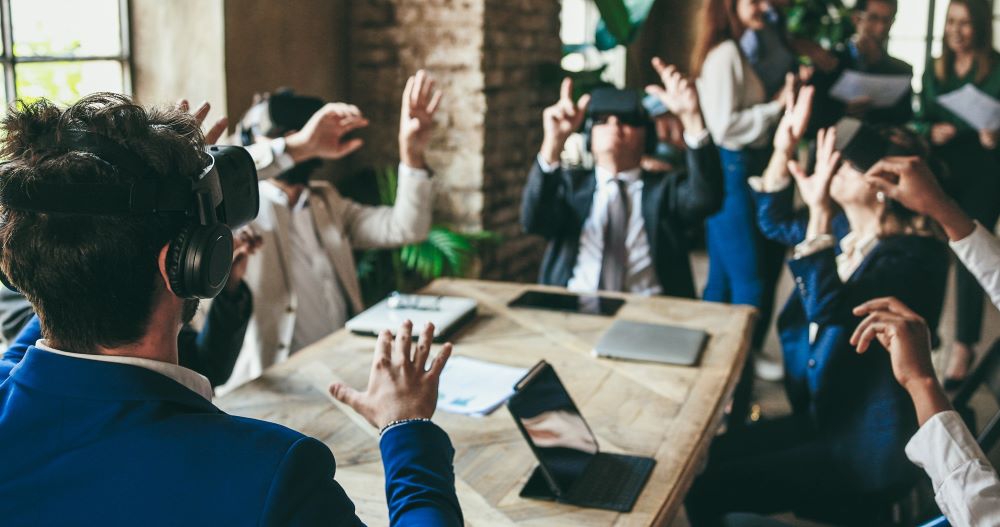
AI-driven Workspaces – How Technology is Shaping the Employee Experience
Artificial intelligence and advanced technology. A passing trend? A fun tool for designers or workplace strategists to merely experiment with? Or a technological development which is crucial to predict, plan and implement the future workplace we’re all creating?
Workplace insights reveal that businesses failing to incorporate technology into their operations face significant challenges. Remote and hybrid workers have increasingly raised complaints about connectivity, with more reporting that they have a hard time accessing the information and files they need due to tired work systems.
Workers at companies behind on technology implementation report greater feelings of disengagement, driven by outdated workflows and limited flexibility. Whereas companies that embrace digitalization experience notable improvements in employee morale and job satisfaction. In fact, new research from Slack finds that 80% of employees using generative AI tools are experiencing a boost in productivity.
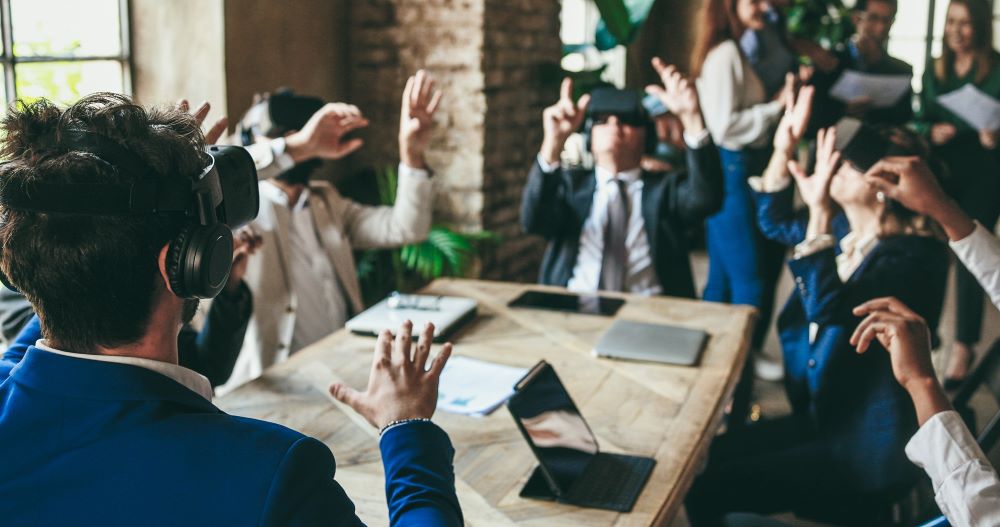
Organizations that invest in tech-driven engagement strategies—like Salesforce’s thoughtful integration of technology with human interaction—are setting new benchmarks for positive workplace culture. These businesses report enhanced productivity, superior customer service, and stronger employee retention.
The message is clear: companies that resist or delay digital transformation risk falling behind, not only in market competitiveness but also in maintaining a motivated and loyal workforce.
When we think of AI, automation and efficiency tools often come to mind, with performance improvements as the primary focus. However, AI's potential in workspace design extends far beyond this, offering the possibility to completely reimagine the employee experience. Here, we’ll explore how AI can reshape the way we work and interact within our environments.

Personalization:
Imagine stepping into an office where the environment automatically adapts to your preferences, creating a space that optimizes focus, creativity, and wellbeing. This is the future of workspaces—where design and technology converge to craft environments as dynamic as the people who inhabit them.
One of the most exciting innovations is the concept of AI-driven personalized environments. By analyzing data on how employees interact with their surroundings—such as their preferred lighting, temperature, or noise levels—AI can intelligently adjust these elements to create the perfect setting for each individual.
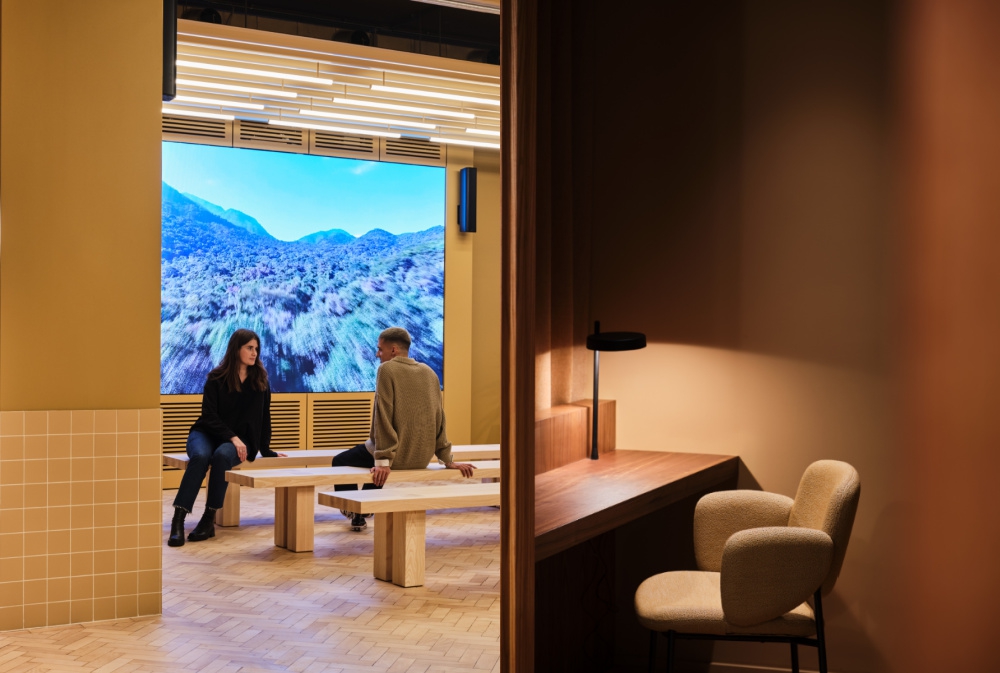
For instance, picture a workspace that knows you prefer a quiet, warm environment in the morning and a more collaborative, open space in the afternoon. AI can seamlessly make these adjustments, enhancing comfort and productivity without the need for manual changes.
This idea extends beyond physical adjustments. Imagine an AI-powered environment that knows your schedule, deadlines, and can filter the most important messages for you the moment you walk into the office. This technology, already available through voice-activated AI such as Amazon’s Alexa or Google’s Echo, has boundless potential in the workplace.
These AI-informed design elements can significantly enhance employee performance by creating environments that are not only supportive but also responsive to individual needs.
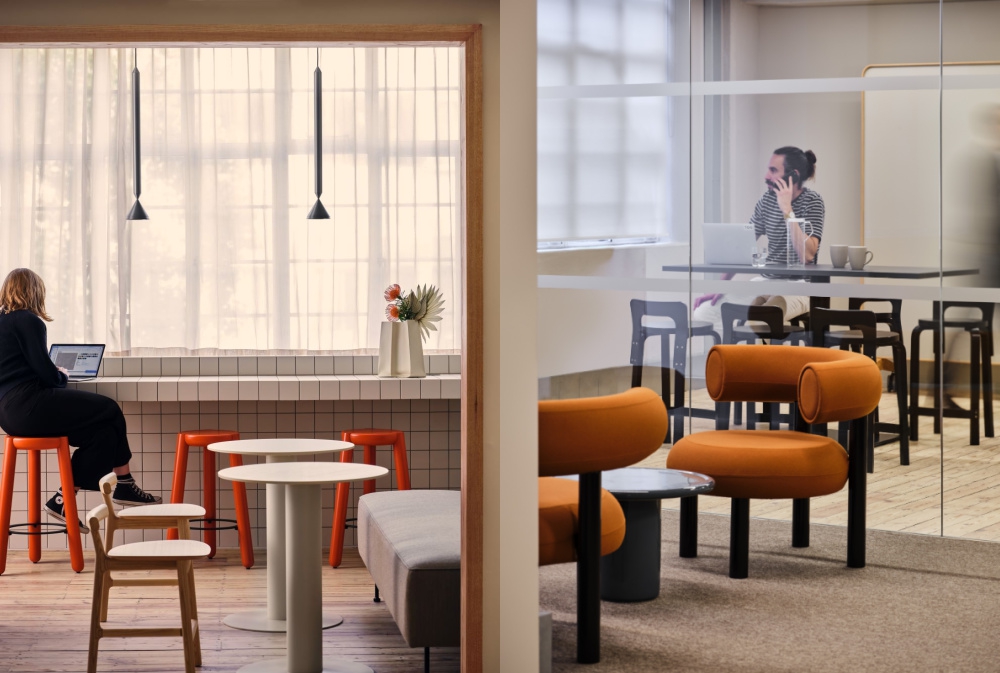
Space Optimization:
AI’s analytical prowess also makes AI an invaluable tool for workspace utilization. By tracking data on employee movement and interaction, AI can suggest designs that enhance collaboration, productivity, and wellbeing.
AI can analyze how frequently different areas of the office are used, identifying underutilized spaces or bottlenecks in foot traffic. This data can then be used to redesign the layout, placing collaborative areas where they are most needed or adjusting workstation locations to reduce distractions. By understanding how employees move and interact, AI can suggest configurations that enhance collaboration, increase productivity, and improve overall wellbeing.
Paired with the use of modular furniture, this approach not only boosts employee satisfaction but also helps reduce costs by optimizing space usage and reducing the need for frequent, large-scale renovations.
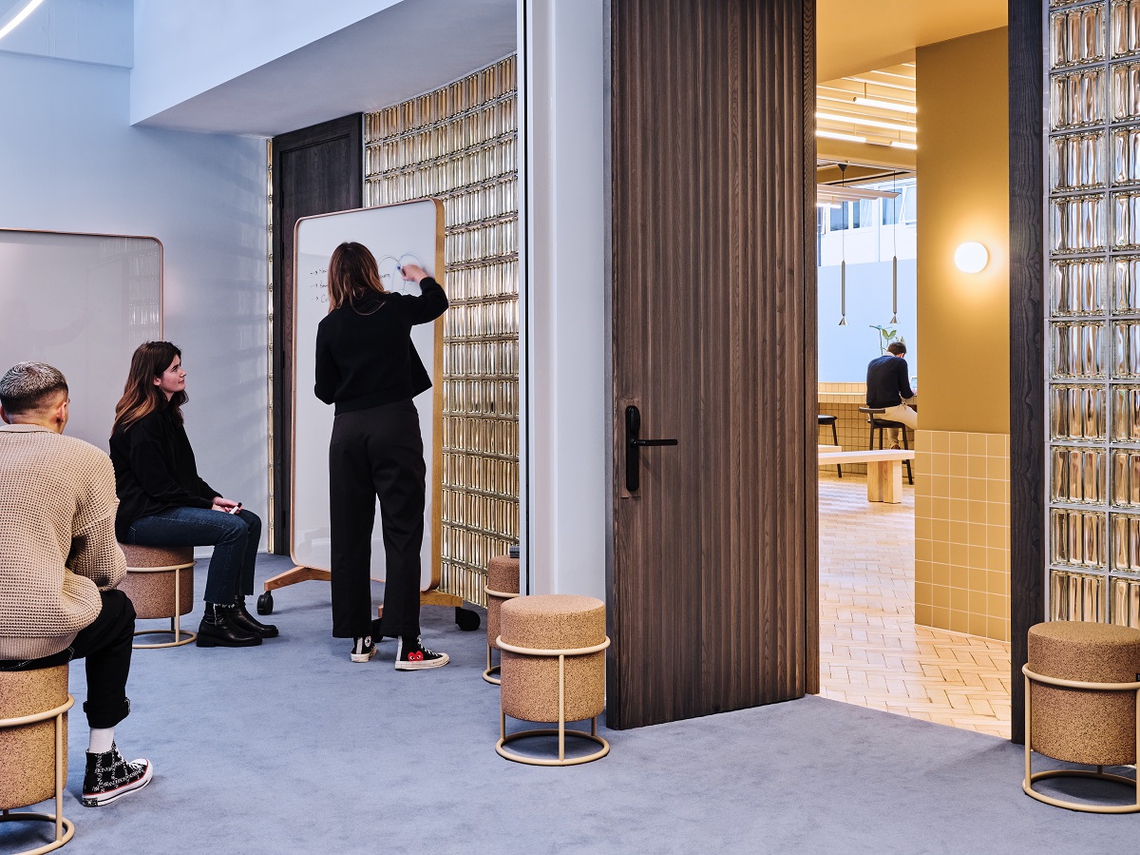
Smart Collaboration Spaces:
As the role of the office increasingly relies on collaboration, office design must evolve to support this shift, and AI can be instrumental in optimizing these environments. Smart collaboration spaces, powered by AI, can adapt dynamically to the needs of different teams and tasks, creating a more effective and engaging workspace.
For instance, AI-powered tools can enhance meeting rooms by automatically adjusting lighting, acoustics, and even seating arrangements based on the type of meeting and the participants involved. Imagine an ideation session where the lights automatically dim to a soft hue conducive to creative thinking, while a client presentation might trigger brighter, more focused lighting. AI can also adjust the acoustics to ensure that everyone in the room can hear clearly, minimizing distractions.
Additionally, AI can assist in scheduling meetings by co-ordinating participants' calendars and suggesting the best times, regardless of time-zone, while also providing real-time translation services to ensure language barriers don't hinder collaboration. The result is a workspace that not only facilitates collaboration but elevates it to a new level and the possibilities are truly endless.
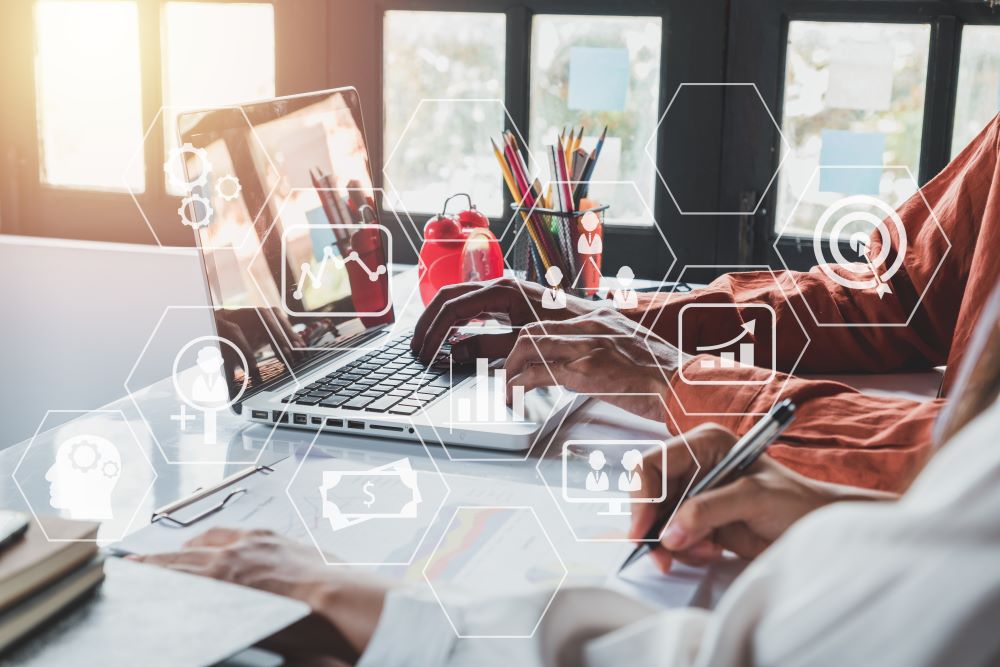
Wellbeing Through Intelligent Design
While research that allows AI to scan facial expressions to read your mood remains in development and with ethical implications, there are innovative ways that AI could boost wellbeing at work. AI-driven wellness solutions can be integrated into workspace design, offering real-time monitoring and adjustments of environmental factors such as air quality, lighting, and noise levels, ensuring that the workspace supports both productivity and mental wellbeing.
Beyond these environmental controls, AI can play a vital role in promoting health and safety. For example, AI could prompt employees to take breaks if they've been staring at their screens for too long, encourage them to stretch, or even suggest stepping outside for fresh air. These subtle nudges can help reduce stress and prevent burnout, fostering a healthier work culture.
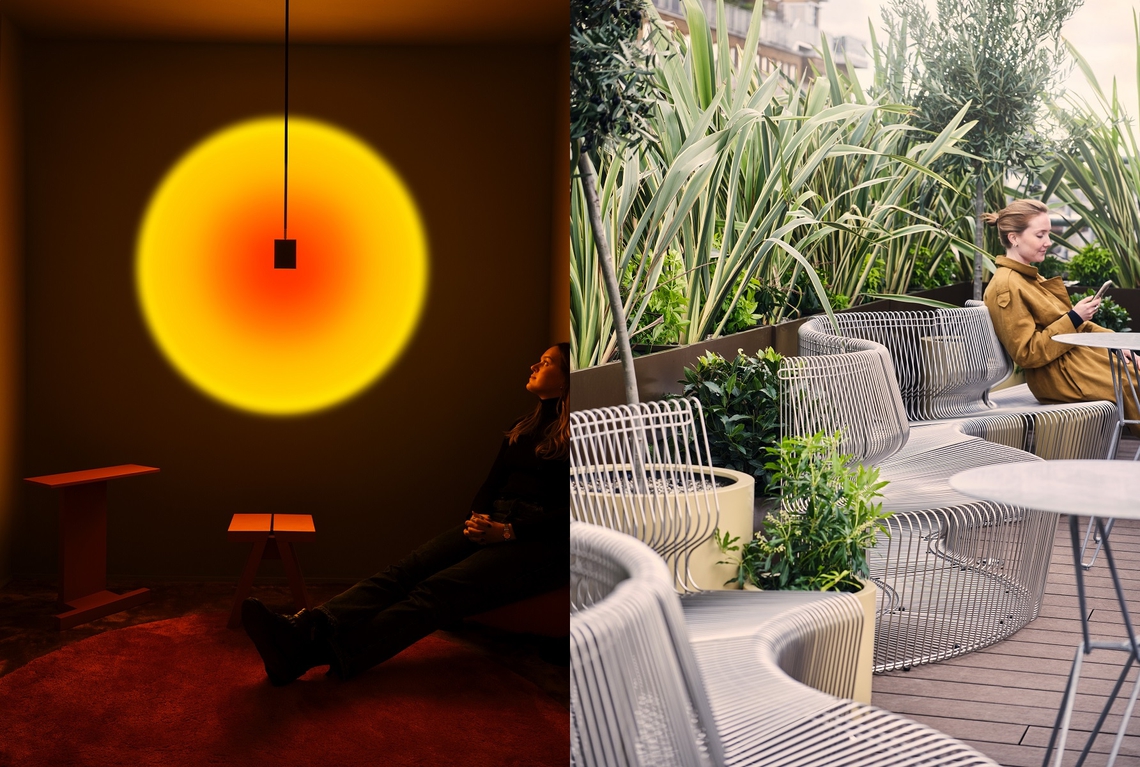
The integration of AI and technology into workspace design is opening up new possibilities for enhancing employee performance and experience. As we embrace this future, it's clear that the workplaces of tomorrow will be defined by their ability to seamlessly blend technology with thoughtful design. If you’d like to talk about your workspace design and how to future-proof it, get in touch with us today.

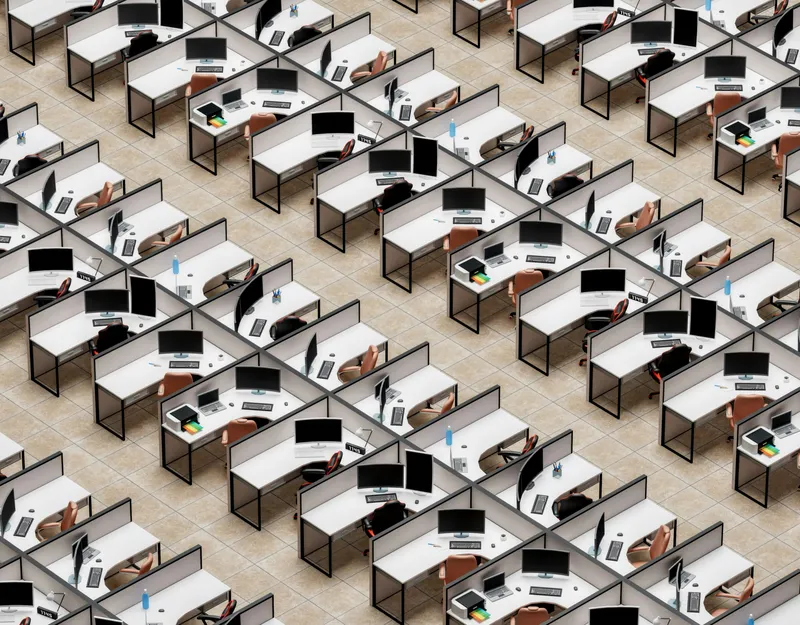
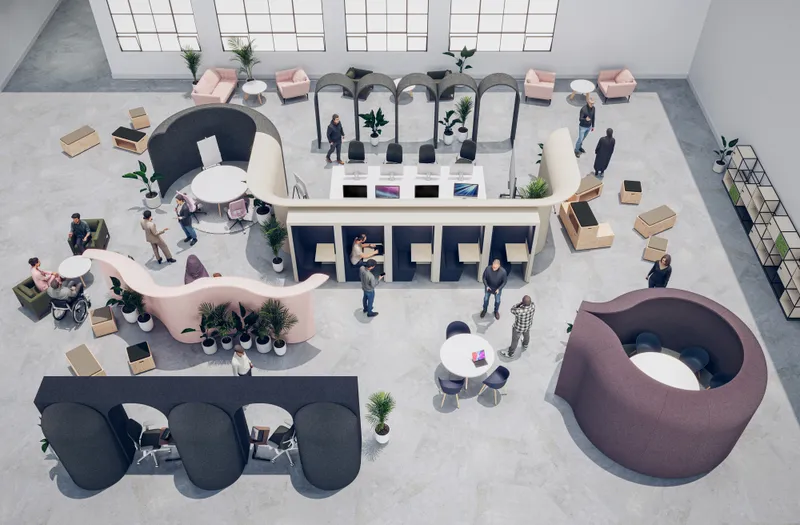
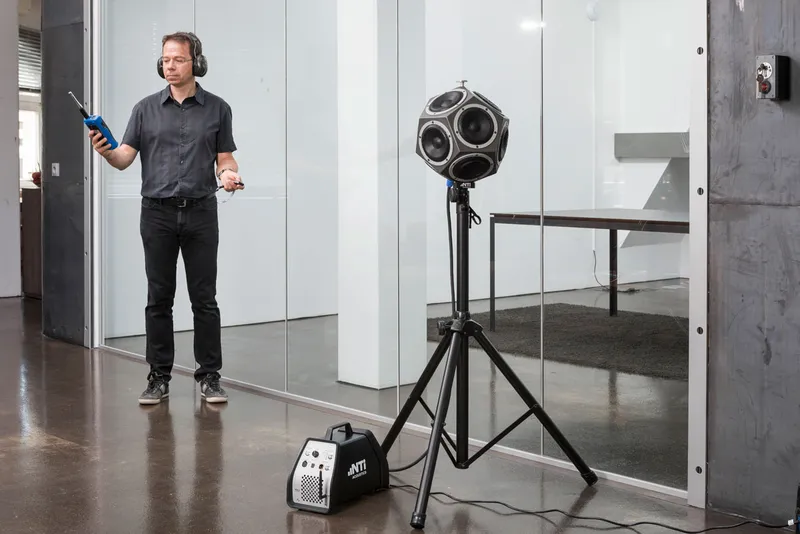
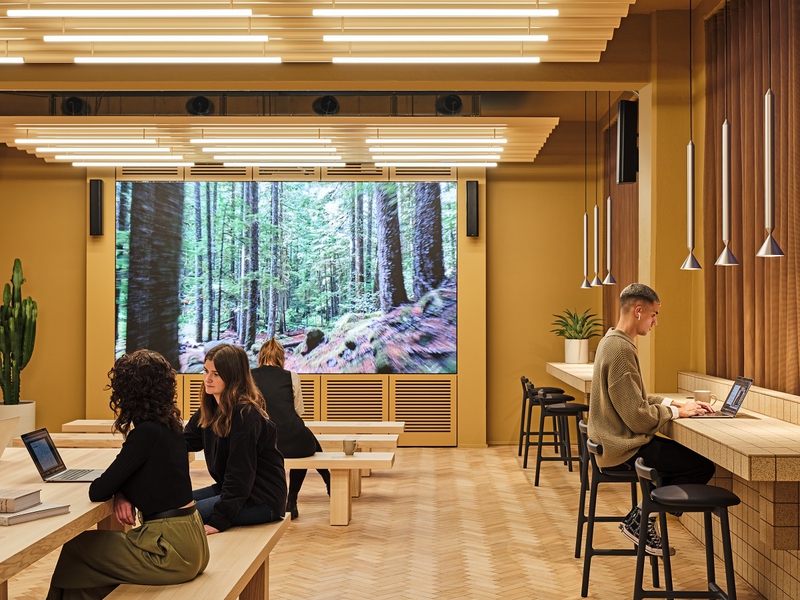
Neutral but bright, calm but dynamic - in this space paradox makes sense and works fluidly in a stunning workplace expe…
REAL ESTATE
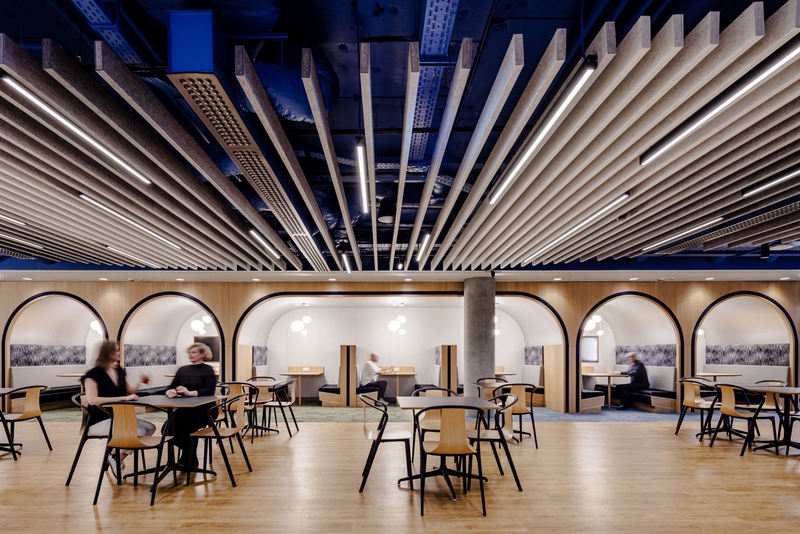
FINANCIAL SERVICES
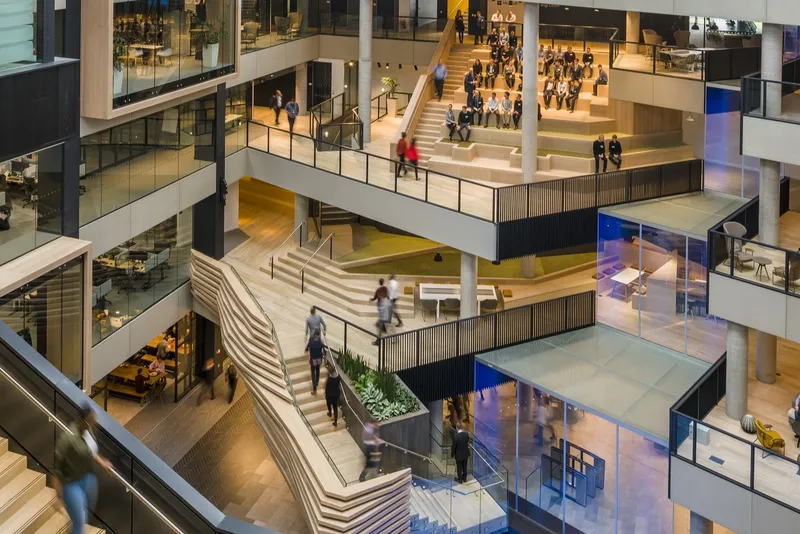
The campus, covering 34,000 square meters and accommodating close to 2,000 employees, was designed by RKD Architects an…
TECHNOLOGY & IT